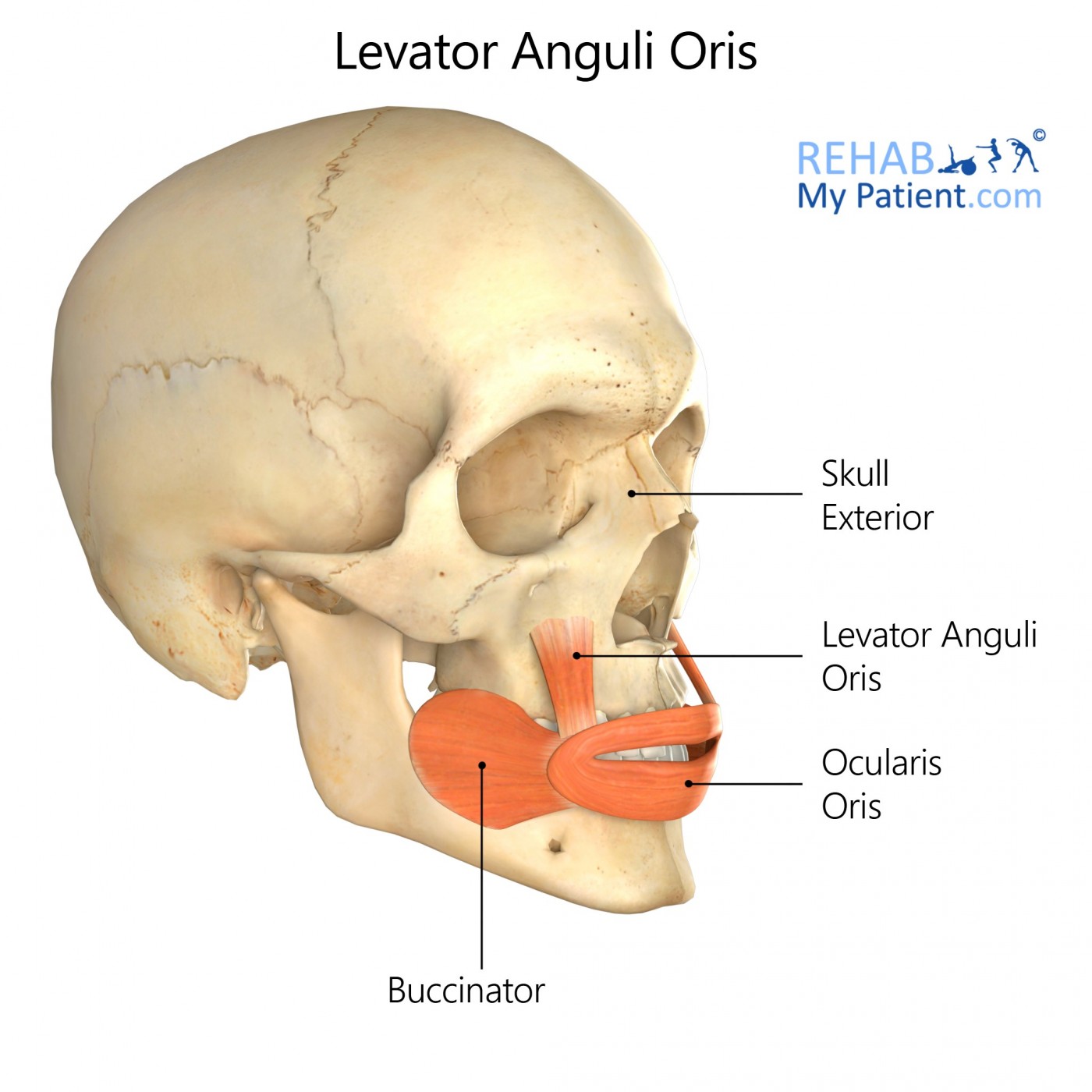
General information
Levator anguli oris is one of the muscles of facial expression.
Literal meaning
The muscle that lifts the corners of the mouth
Interesting information
Levator anguli oris is a facial muscle that arises from the canine fossa and attaches at the angle of the mouth. It is one of a multitude of facial muscles that are involved in forming and manipulating facial expressions.
Specifically, levator anguli oris is responsible for elevating the angle of the mouth which allows for smiling and a number of other essential facial expressions used both during speech and nonverbal communication. Therefore, any injury to levator anguli oris can be severely debilitating and have a hugely negative impact on an individual’s life. If only one levator anguli oris muscle is injured, the other muscle will still be able to contract. However the injured side of the mouth will clearly be distinguishable due to the fact that one side will droop or fail to elevate in coordination with the uninjured side.
Medical conditions that may cause injury or dysfunction in levator anguli oris include stroke, myositis, myopathy, atrophy, and tears. These issues usually present as pain near the mouth and cheek, involuntary muscle movement (spasms), or limitations in facial movement and expression.
Origin
Maxillary bone (canine fossa).
Insertion
Mediolus (angle of the mouth).
Function
Lifts or raises the angle of the mouth and assists in deepening the nasolabial furrow.
Nerve supply
Facial nerve (C7).
Blood supply
Facial artery.

Relevant research
Excision is the most effective and safe method for treating tumors of nasal skin. However, the excision surgery can mar the appearance of the patient and cause unnecessary psychological trauma. Therefore, reconstructive surgery is often required after resection. The levator anguli oris muscle can be used as a surgical flap for nasal reconstruction following the excision of nasal tumors.
Denewer A, Farouk O, Fady T, Shahatto F. (2011). “Levator anguli oris muscle based flaps for nasal reconstruction following resection of nasal skin tumours”. World J Surg Oncol. 9:23.
Facial reanimation surgery aims to correct the inability to smile in patients suffering from facial nerve palsy. New methods for measuring the physiological outcomes for these types of surgeries provide surgeons with specific muscle targets for reanimation. Specifically, levator anguli oris and zygomaticus major have a measurable effect on perception of appropriate smile formation.
Penn JW, James A, Khatib M, Ahmed U, Bella H, Clarke A, Butler PE. (2013). “Development and validation of a computerized model of smiling: Modeling the percentage movement required for perception of smiling in unilateral facial nerve palsy”. J Plast Reconstr Aesthet Surg. 66(3):345-51.
Levator anguli oris exercises

When performed regularly, facial exercises can relieve tension and even improve the smoothness of your face. To focus on levator anguli oris which is responsible for raising the corners of your mouth, first stand in front of a mirror then place your index fingers on your cheeks near the corners of your mouth. While applying gentle pressure with your fingers, smile broadly. Hold the smile while resisting the pressure from your fingers for ten seconds then return to a neutral position. Repeat the exercise ten times and also remember to smile frequently throughout the day.
Sign Up
Sign up for your free trial now!
Get started with Rehab My Patient today and revolutionize your exercise prescription process for effective rehabilitation.
Start Your 14-Day Free Trial